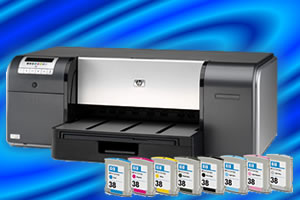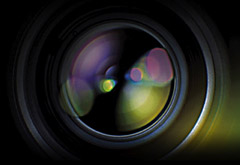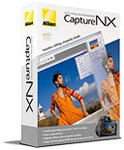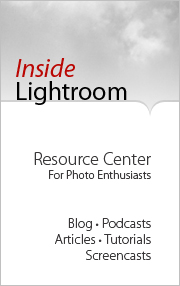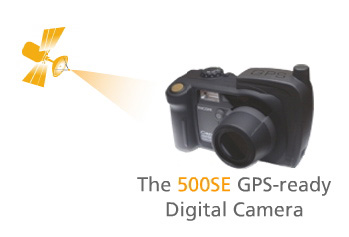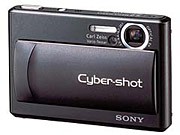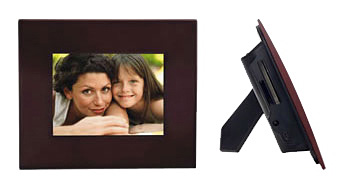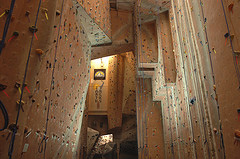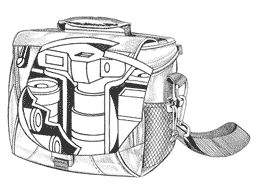
In Podcast 69, I talked about what's in my camera bag. One of the things I mentioned during the show was that I wanted to know what you're packing these days when you go out for a shoot. Virtual camera club member, Anthony Watson, took me up on the offer, and here's what he has to say.
"I like your idea of having 'application specific' photo bags," says Anthony. "Some day I will do that. In the meantime, I have most everything in one bag as follows:"
- Nikon D70 body
- Sigma 50/2.8 macro lens (from my N70)
- Sigma 24-70/2.8 (also from my N70, now you know why I chose a D70)
- Sigma 70-300/4-5.6 (again, from my N70)
- Vivitar ring flash (for the macro lens)
- Nikon SB800 flash (my favorite purchase so far)
- Cokin filter system
- Cokin circular polarizer
- Cokin 2 stop hard gradient filter
- Lens pen
- Rocket blaster (thanks for the suggestion on one of your early podcasts!)
- Batteries, batteries, and more batteries
- 2 SanDisk 2GB CF cards
"This setup seems to cover just about all of my needs. I wish I had a macro lens somewhere between 85 and 135 - hopefully someday."
Tell us what you have in your camera bag. Just write a few words about your packing philosophy and add the contents list. Go to the Submissions page for contact information.
Technorati Tags: gadgets, The Digital Story

